本文
Gold and Silver in Sado : Sado City, Niigata Pref. Japan
- Home
- Gold and Silver in Sado
- Nishimikawa Placer Gold Mine
- Tsurushi Silver Mine
- Aikawa Gold and Silver Mine : Edo period
- Aikawa Gold and Silver Mine : From Meiji era onward
The Value of Sado Gold and Silver Mine
Sado Island is located offshore from Niigata in the Sea of Japan. Sado is a remote island with a landmass of 855 square kilometers. The development of Sado Gold and Silver Mine was fully underway by the middle of the 16th century, and during the Edo Period (1603-1867), it provided the resources to support a monetary economy both in and outside of Japan as the largest gold and silver mining operation in the nation. The landscape of the gold and silver mine and the mining town formed along with it are still visible today, while the remnants of mining-related facilities from each period of mining history are well preserved. During the Meiji Restoration, which started in 1868, advanced technology from the West was also introduced to further Japan's modernization. A group of former mining-related facilities are preserved as modern industrial heritage sites in Aikawa Gold and Silver Mine, the hub of gold and silver mining at the time.
As such, there are a variety of mine-related heritage sites and cultural landscapes, cultivated over the past 400 years, that are still well preserved all over Sado Island. Sado Island is known as an exceptional place where cutting-edge mining technology from various periods can be observed across the island.
Also, a variety of religions, performing arts and customs were introduced by people from all over Japan who came to Sado to support the development of the mining industry. These new cultures blended with the original Sado culture, which led to the blossoming of an entirely new culture unique to the island.
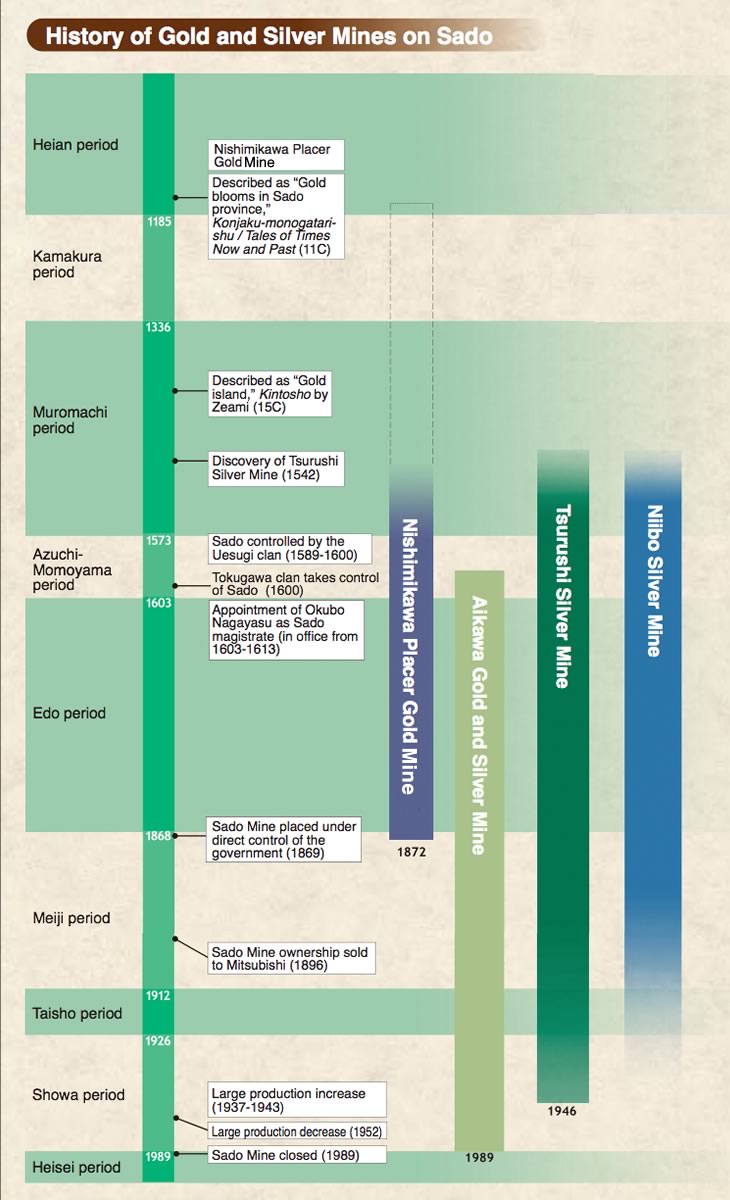
Gold ore
The mineral veins of Sado Gold and Silver Mine lie in solid bedrock. In the ore, you can see black stripes called gin-guro (silvery black) which contain a variety of minerals, including large amounts of electrum, a gold and silver alloy. Very special smelting techniques were developed on Sado in order to extract gold from these hard minerals.
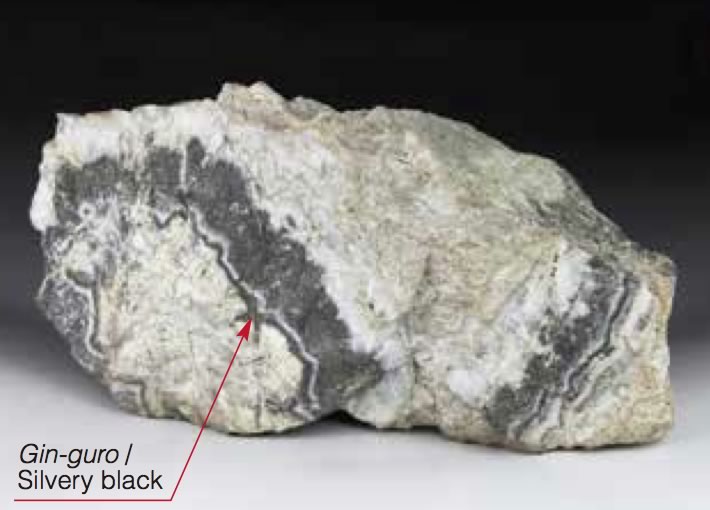
Property of Golden Sado Co., Ltd.
Evolution of gold vein
Heat from magma causes various minerals such as gold, silver, copper, and quartz to melt out of the rock and into the ground water. When this superheated water rises up through cracks of bedrock, gold and quartz are precipitated on the wall of the cracks, forming veins. At the Aikawa Gold and Silver Mine, you can still see outcrops of the Aobanmyaku vein, which is one of the largest veins in Japan.
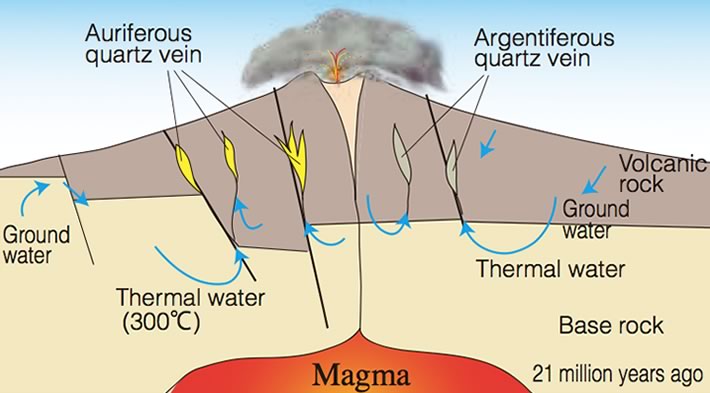
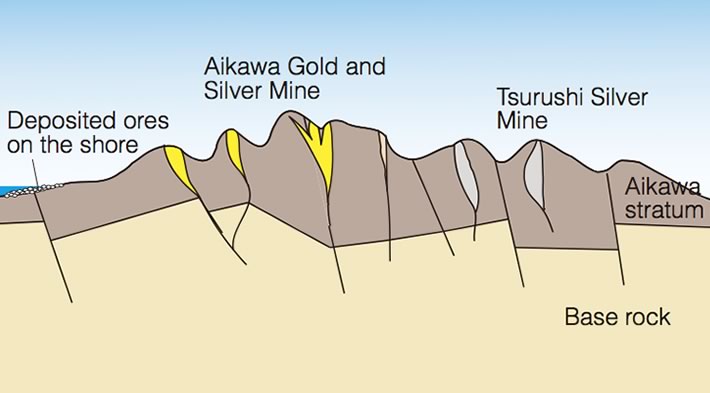
Votive picture of miners
The miners believed centipedes to be special since they look similar to mineral veins and the mine shafts. Many paintings and local performing arts on Sado still contain references to these centipedes.
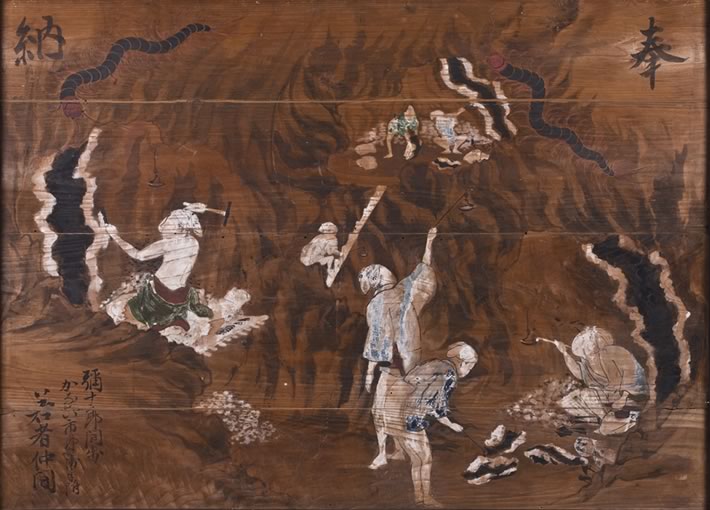
Property of Aikawa Folk Museum.
World Heritage
World Heritage is the designation for places (cultural properties, historic sites, natural sites) which should be protected as a shared asset for all humanity and passed on to future generations. There are three types of heritages, "cultural heritage", "natural heritage", and "mixed heritage" that combine elements of both natural and caltural heritages. UNESCO (United Nations Educational, Scientific and Cultural Organization) inscribes these sites based on the Convention Concerning the Protection of the World Cultural and Natural Heritage.
Since 2006, Niigata Prefecture and Sado City have been collaborating in research in order to help the Sado Gold and Silver Mine to reach its goal for World Cultural Heritage inscription. In 2010 the Sado mine complex was listed on the World Heritage Tentative List of Japan* under the name of "The Sado Complex of Heritage Mines, Primarily Gold Mines", and officially became a candidate for World Cultural Heritage status.
In addition to investigating ways to protect and maintain the site, Niigata and Sodo are working together on creating a nomination proposal to be sent to UNESCO.
* Tentative List is a group of nominations for the World Heritage, submitted by the state parties to UNESCO, and World Heritage status is inscribed from among those candidates on this list.



